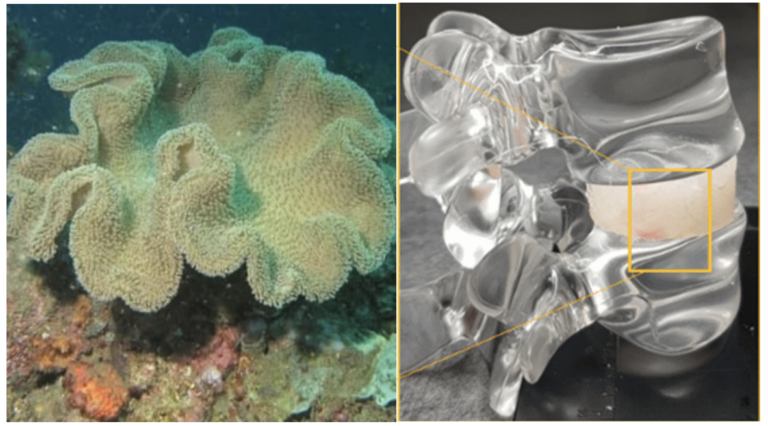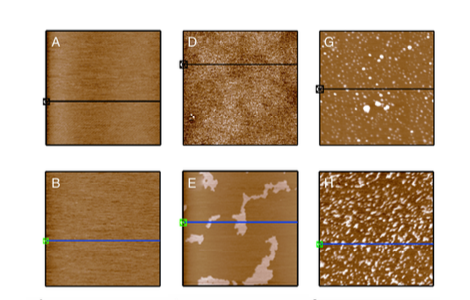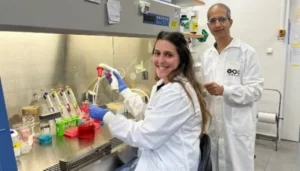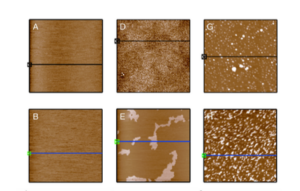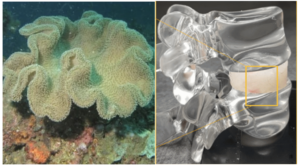Reut Shalgi (Technion, Israël) fait parler les protéines pour soigner Parkinson, Alzheimer, l'ALS…

[:fr]
Israël Science Info a décidé de rendre hommage à une femme d’exception, Reut Shalgi, professeur assistant et chercheuse au Technion. «La science vous mène dans des directions auxquelles vous ne vous attendiez pas, et vous devez trouver votre chemin à travers cela », raconte le Pr Reut Shalgi. Reut Shalgi a quitté le MIT pour revenir en Israël grâce au Technion, où elle étudie actuellement les mécanismes de régulation de la synthèse protéique à l’Institut de recherche médicale Rappaport. « En tant que scientifique, j’ai accès à un monde infini de sujets de recherche. La science mène dans des directions inattendues, et on doit trouver son chemin à travers cela, et en même temps se laisser guider ».
Reut Shalgi, qui a reçu la prestigieuse bourse universitaire Alon for Outstanding Young Faculty, a rejoint les rangs de la faculté du Technion l’an dernier. Actuellement, en tant que membre de l’équipe de l’Institut de Recherche Médicale Rapapport du Technion, elle étudie les mécanismes de contrôle de la traduction par les ribosomes.
Elle est diplômée Cum Laude de l’Université de Tel-Aviv en 2002, en Biologie et en Sciences Informatiques. Son projet de fin d’études explorait ce qui était à l’époque le domaine émergent de la bioinformatique, qui applique les outils statistiques et de l’informatique à la recherche biologique et pharmacologique.
Grâce à ses compétences en sciences informatique le Pr Shalgi a commencé, alors qu’elle était encore étudiante, à travailler pour la société high tech RadVision. Mais la recherche de nouveaux défis l’a amenée à s’inscrire dans le programme de Master en Sciences de la Vie à l’Institut Weizmann. Sous la direction du Pr Yitzhak Pilpel et du Pr Ron Shamir, elle a utilisé des méthodes bio-informatiques pour étudier les mécanismes qui régulent l’expression des gènes – et a été captivée par le monde de la recherche scientifique. « Au cours de mon master, j’ai compris que je voulais être une scientifique, comprendre le fonctionnement des cellules, enquêter sur les façons dont elles peuvent mal fonctionner et trouver des moyens de les corriger ».
« Nous travaillons dans le domaine nouveau et fascinant de la biologie des systèmes, intégrant de plus en plus la biologie et l’informatique, et utilisant les données de l’ensemble du génome ainsi que des outils bio-informatiques », explique la Professeure adjointe Shalgi. «La biologie des systèmes nous donne une vue d’ensemble des processus biologiques qui ont lieu à l’intérieur de la cellule, alors que la biologie classique examine ces processus en profondeur. » Elle a poursuivi un doctorat à l’Institut Weizmann, sous la direction des Prs Pilpel et Moshe Oren. «Ma recherche c’est portée sur les mécanismes de régulation de micro-ARN – de petites molécules qui sont des gènes mais qui ne codent pas de protéines. Chaque étape de la synthèse des protéines est contrôlée par de nombreux facteurs à l’intérieur de la cellule. J’étudiais les interrelations et la coordination entre les différents niveaux de ce réseau ».
En 2009, après avoir terminé son doctorat, la professeure adjointe Shalgi est allée poursuivre ses études post-doctorales au MIT. Sous la direction de l’expert en bioinformatique Prof. Chris Burge et de la professeure Susan Lindquist, une experte mondiale dans le domaine de chaperons (des protéines spécialisées qui facilitent le bon pliage des autres protéines cellulaires, ce qui est essentiel pour leur bon fonctionnement), Shalgi étudia les mécanismes de contrôle de la traduction dans les cellules soumises à un stress, ainsi que les interrelations entre le ribosome et les chaperons. C’est à ce moment là qu’elle a découvert un mécanisme jusqu’alors inconnu du contrôle de la traduction : la mise en pause de ribosomes par les chaperons pendant le processus de traduction. Elle continue de travailler sur ce mécanisme depuis son propre laboratoire.
Cette pause se produit en réponse à des conditions environnementales extrêmes, et est régulée par les chaperons et leurs interactions avec le ribosome. Après l’arrêt du stress, le processus essentiel de la synthèse des protéines reprend.
« Nous pensons que ce mécanisme est également impliqué dans les maladies neuro-dégénératives, comme les maladies de Charcot, d’Alzheimer, de Parkinson et de Huntington… » ajoute-t-elle, « les conditions dans lesquelles les protéines se plient mal et s’accumulent [accumulation et agglutination]. Nous étudions actuellement comment la pause des ribosomes est liée à ces pathologies ».
Elle a gardé de très bons souvenirs de ses cinq années post-doctorat à Boston, au cours desquelles sa première fille est née, mais «Je voulais vraiment revenir en Israël, vers ma famille et mes amis. En octobre dernier, nous sommes rentrés en Israël, grâce au Technion. Je suis revenue du MIT avec plusieurs méthodologies de recherche de pointe ».
Une de ces méthodes consiste en un criblage à haut débit, exécuté par robot, des interactions protéine-protéine, qui peut analyser des milliers de paires de protéines par jour et produire une information quantitative sur les interactions entre chaque paire de protéines. Reut Shalgi analyse ces données en utilisant des outils bio-informatiques, et cartographie le réseau de contrôle qui régit le système de traduction de la cellule et les interactions entre les protéines : « Le robot me permet de cartographier rapidement des réseaux de protéines en entier, et j’utilise des outils bio-informatiques pour analyser les échanges entre les composantes de ce réseau, et les régulateurs de la traduction ».
« Dans mon laboratoire, nous intégrons la biologie avec des méthodologies et de la bio-informatique à l’échelle du génome entier afin d’étudier la cellule comme un système. Notre approche unique est de regarder la cellule comme un système dans lequel chaque composant doit non seulement fonctionner correctement de lui-même, mais être aussi coordonné avec tous les autres composants ».
Elle n’a jamais eu le sentiment de compromettre son excellence scientifique ou celle de sa recherche en quittant le MIT pour le Technion. «Cette Faculté et le Technion m’offrent les normes les plus élevées possible. C’est une Faculté très diversifiée avec une interface, forte et saine, entre la recherche clinique et scientifique. La nouvelle formation du Technion en Sciences Médicales offre aux étudiants de la Faculté une occasion de se familiariser avec la science et de peut-être devenir chercheur. Tout le monde sait ce qu’est un médecin, mais tout le monde ne comprend pas ce que signifie être chercheur, ce qu’il fait réellement au quotidien. Un médecin traite les patients avec les outils à sa disposition, mais le développement d’un nouveau médicament ou traitement nécessite une compréhension en profondeur des mécanismes qui conduisent à la maladie, et c’est ce que nous chercheurs, tendons à faire. Certains médecins parviennent à faire de la recherche aux côtés de la clinique, mais ce sont les chercheurs à temps plein qui peuvent réellement se plonger profondément dans les processus causant la maladie ».
[:en]“Science leads you in directions you hadn’t thought of, and you have to navigate your way through it.” Assistant Professor Reut Shalgi returned from MIT to Israel thanks to the Technion, where she currently investigates regulatory mechanisms of protein synthesis at the Rappaport Institute of Medical Research.
“As a scientist, I have access to an endless world of research topics. Science leads you in directions you hadn’t initially thought of, and you have to navigate your way through it, but at the same time to let it lead you.”
Assistant Professor Reut Shalgi, who this week was awarded the prestigious Alon Fellowship for Outstanding Young Faculty, joined the ranks of the Technion faculty last year. Currently, as a member of the team at the Technion’s Rappaport Institute of Medical Research, she investigates the mechanisms of translational control by the ribosomes.
She graduated cum laude from Tel Aviv University in 2002, with a double major in Biology and Computer Science. Her final project explored what was back then the emerging field of Bioinformatics, which applies tools from statistics and computer science to biological and pharmacological research.
Thanks to her computer science skills Prof. Shalgi began, while still an undergraduate, to work in the hi-tech company of RadVision. But the search for new challenges led her to enroll in the Life Sciences Master’s degree program at the Weizmann Institute. With the guidance of Prof. Yitzhak Pilpel and Prof. Ron Shamir she used bioinformatical methods to study mechanisms that regulate gene expression – and was captivated by the world of scientific research. “During my Masters I realized I wanted to be a scientist – to understand how cells function, investigate the ways in which they can malfunction and find ways of correcting them.
“We work in the new and fascinating field of systems biology, increasingly integrating biology and computer science, and using genome-wide data and bioinformatical tools,” Assistant Professor Shalgi explains. “Systems biology gives us an broad view of the biological processes taking place inside the cell, whereas classic biology examines these processes in depth.” She went on to undertake her PhD at the Weizmann Institute, with Prof. Pilpel and Prof. Moshe Oren as her advisors. “My research focused then on the regulation mechanisms of micro-RNA – small molecules that are genes but that do not encode proteins. Every stage in protein synthesis is controlled by numerous factors inside the cell. I investigated the interrelationships and the coordination between different levels in this network.”
In 2009, after she completed her Ph.D., Assistant Professor Shalgi went to pursue her post-doctoral studies at MIT. Under bioinformatics expert Prof. Chris Burge and Prof. Susan Lindquist, a world leader in the field of chaperones (specialized proteins that facilitate the correct folding of other cellular proteins, which is essential for their proper function), Shalgi studied translation control mechanisms in cells under stress, as well as the interrelationship between chaperones and the ribosome. It was at this time that she discovered a previously unknown mechanism of translation control: chaperone-mediated ribosome pausing during the translation process. She continues to research this mechanism in her own lab.
The pausing occurs in response to extreme environmental conditions, and is mediated by the chaperones and their interaction with the ribosome. Upon relief from stress, the essential process of protein synthesis resumes.
“We think that this mechanism is also involved in neurodegenerative diseases, such as ALS, Alzheimer’s, Parkinson’s and Huntington’s diseases, among others,” she adds, “conditions in which proteins misfold and aggregate [accumulate and clump together]. We are currently studying how ribosome pausing is linked to these pathologies.”
She has very good memories of her five post-doctoral years in Boston, during which her first daughter was born – but “I really wanted to come back to Israel, to my family and friends. The Technion gave me a very warm welcome, and last October we returned to Israel – thanks to the Technion. I came back from MIT with several cutting-edge research methodologies, which I brought with me to my new lab at the Faculty of Medicine.”
One of these methods involves high throughput screening of protein-protein interactions performed by a robot, which can screen thousands of protein pairs per day and produce quantitative information on the interactions between each pair of proteins. Assistant Professor Shalgi analyses this data using bioinformatics tools, and maps the control network that governs the cell’s translation system and the interactions among the proteins: “The robot enables me to map out entire protein networks rapidly, and I use bioinformatics tools to analyze the cross-talk between the components in this network, and translation regulators.
“In my lab we integrate biology with genome-wide methodologies and bioinformatics to study the cell as a system. Our unique approach is to look at the cell as a system in which every component must not only function properly on its own but also be coordinated with all other components.”
She never felt that she had to compromise her scientific or research excellence with the move from MIT to the Technion. “The Faculty and the Technion offer me the highest standards possible. It’s a very diverse faculty with a good, strong interface between clinical and scientific research. The Technion’s new major in Medical Sciences offers the Faculty’s students an opportunity to get to know the science and possibly become researchers. Everyone knows what a medical doctor does, but not everyone understands what it means to be a researcher, what it is that researchers actually do on a day-to-day basis. An M.D. treats patients with the tools available to them, but the development of a new drug or treatment requires in-depth understanding of the mechanisms that lead to the disease, and that’s what we as researchers aim for. Some medical doctors manage to do research alongside the clinic, but it’s the full-time researchers who can delve deeply into the processes that cause the disease.”[:]

